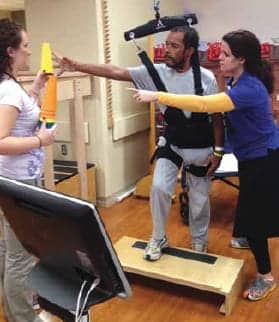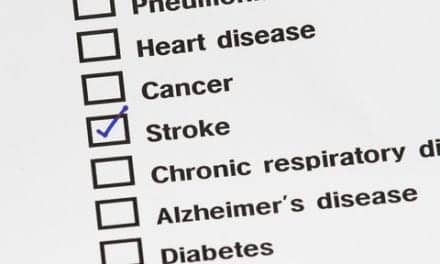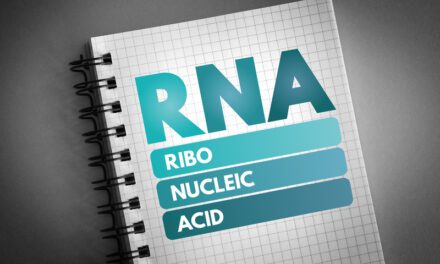Combining familiar principles with new technology opens the doors to innovative treatment ideas and progress
 |
| With the help of the harness system and therapist Eva Warschawski-Gonsher, patient J.P. challenges his balance, coordination, and quadriceps strength while improving his weight shifting and weight acceptance onto his right lower extremity. |
by Eva Warschawski-Gonsher, PT, DPT, NCS, CBIS
A stroke or cerebrovascular accident (CVA) is a devastating neurological event that can lead to disabling physical and cognitive deficits. In the United States, there is an average occurrence of one stroke every 40 seconds.1 It is no wonder then that strokes are the leading cause of serious, long-term disability in this country.2 As healthcare professionals, we have the distinct privilege and responsibility to help our patients recover in the best way possible from what can be such a life-altering event.
There are many ways we can use our therapeutic skills to aid in that recovery and help our patients return to a functional life. In this day and age when technology is evolving rapidly, the range of tools we can use is ever growing. By combining the latest treatment technology and our long-standing principles of training, we as therapists can push the limits of treatment progression for a challenging, satisfying, effective, and fun rehabilitation experience.
Guiding Principles
The two major principles of training to consider are the overload and specificity principles. According to the overload principle, in order to enhance physiological function and achieve a training response, regular application of a specific exercise overload is needed. To improve function, the body “…must be exposed to a load to which it is not normally accustomed.”3 Repeated exposure helps the body adapt to the demand placed upon it. Patients who are post-stroke can quickly have a decrease in the intensity, duration, and frequency of exercise they can tolerate. This is due to the neurological deficits that ensue as well as to the several days of decreased activity, often to the point of bed rest, that occur on the road back to medical stability.
According to the principle of specificity, training effects derived from an exercise program are specific to the exercise performed and muscles involved. In other words, “Specific exercise elicits specific adaptations creating specific training effects.”4 The greatest improvement in function is seen when the training duplicates the task the patient desires to achieve.5 There is even evidence suggesting a temporal component to specificity of training in which the greatest measured improvement is evident at the time of day the training occurred.4 If we broaden our concept of specificity of training and apply it to variables such as body position, muscle length-tension curves, and environment and combine that with the overload principle by providing the most challenging treatment strategy a patient can tolerate, we can provide the best outcomes through task-specific training.
Pushing Limits
Now to combine this with technology, we will focus on gait training with the use of one of the latest body weight support harness systems. This system allows the therapist to push the limits of balance and gait training while maintaining patient safety by placing them in a harness tethered from a track in the ceiling. This body weight support system gives patients the opportunity to practice tasks sooner in an upright position early in their rehabilitation. Not only can clinicians individualize the amount of body weight support the patient receives, they also can program a certain amount of fall distance for the patient before the system statically holds the patient to prevent him or her from falling. The fall distance includes excursions outside of the base of support in all directions (right, left, forward, backward, all diagonals, and down). The inches of fall distance allotted prior to the patient being “saved” by the system is determined by the clinician based on the functional level of the patient and the activity being performed. This allows the patient to have a balance reaction, even if it is slightly delayed, prior to the therapist having to catch them as they would during conventional gait or balance training. Calculations of body weight support in percentage and pounds, distance ambulated, number of falls prevented, and duration of the session are all available at the clinician’s fingertips.
The use of this system to practice skills in high-level positions early in a patient’s rehab stay puts the principles of overload and specificity perfectly into play in a safe treatment environment. Using the body weight support system for ambulation, balance, and strength training specifically in the upright position allows for the greatest specificity as it is done in standing with potentially no device or the least restrictive device. This is in contrast to training the body in other positions or with more supportive devices and then having to transition that training into the functional position for that activity with a greater demand of progression to a less supportive device.
By training early on with these concepts in mind, quicker learning and treatment progression toward functional independence are able to occur. Patients can be pushed far into the limits of their abilities in the specific position in which the function of gait is performed, allowing for the best potential of training effect and carryover. With the use of the harness as a safety net, patients also can gain the much-needed confidence to progress to the highest level of independence possible. Practicing skills for increased balance and strength as well as actual gait training specifically in the standing position also allows for the patient to easily understand the carryover of training into function. This concrete carryover of training into function is especially important for the neurological population who may have cognitive or communication deficits that limit the ability to make these connections and fully comprehend the link between their training and day-to-day function.
Case Study
Patient J.P. is a 63-year-old male who presented to the emergency department with reports of right-sided weakness and altered speech. He was found to be in atrial fibrillation and his MRI revealed an acute infarct in the left posterior middle cerebral artery distribution. Once in rehab, he presented with decreased coordination and motor control, decreased balance, decreased strength, as well as mild impulsivity. He also had mild to moderate expressive and receptive aphasia, and moderate to severe verbal and oral apraxia. He had the ability to only speak simple automatic phrases and to understand simple questions and follow 1-step to 2-step commands. Initially, J.P. was able to ambulate with a rolling walker for 30 feet with minimal assistance and was unable to negotiate stairs. Over the course of approximately 1 week, he progressed to ambulation first with a hemiwalker for 70 feet with minimal assistance and then with a small-based quad cane for 120 feet with contact guard assistance. He also was then able to ascend and descend six steps with minimal assistance and use of bilateral handrails. These improvements were great, but J.P. was still unsteady and presented with significantly decreased left step length, decreased knee extension at initial contact bilaterally, absent heel strike and push off bilaterally, left knee recurvatum, left Trendelenburg, and a wide base of support during gait.
Due to J.P.’s highly motivated nature and his deficits heavily affecting his gait, he was the perfect candidate to use the body weight support system for training. Through use of the system and only 10 pounds of body weight support, J.P. was able to practice gait with no device with close supervision for a cumulative 180 feet, pushing him past his previous 120-foot gait distance. His gait quality overall was not better when ambulating without a device; however, his step length did become more symmetrical and he had the opportunity to increase his weight shifting and weight acceptance on his right lower extremity without using the “crutch” of a unilateral assistive device. This allowed for greater specificity of training for his lower extremity musculature as they both were being trained with more evenly distributed workloads and more accurate muscle length tension curves than when using a unilateral device.
Once these discoveries were made, we returned to training with a rolling walker to continue providing that symmetry he was not achieving while using the small-based quad cane. Indeed with the use of the rolling walker, J.P. was able to achieve much improved gait symmetry and control. By taking a supposed step back and using a more supportive assistive device, we were actually able to take a step forward in the quality and specificity of gait practice J.P. received during training sessions. He was able to reach greater levels of safety and independence while training better habits of symmetry and control during gait with the goal of eventually advancing to a less supportive assistive device. Examples of other activities we worked on in the body weight support system included backward ambulation to improve extensor strength and balance, as well as cone reaching with his right upper extremity in various planes outside his base of support with one lower extremity on a 6-inch step to further engage his quadriceps and encourage improved weight shifting.
Another way we used specificity of training in J.P.’s treatment was to use specificity of environment. For this, we conducted a home visit. By practicing mobility in his own specific environment prior to discharge, we could better ensure his needs were met and that he would have carryover of his skills from the rehab setting to home.6 The home visit included stair negotiation, gait in the constraints of a smaller row home, bed mobility, transfers from various seating surfaces including low couches, and outdoor ambulation on a city block. All of these skills were practiced as the real life scenarios and barriers he would encounter after discharge, thereby making his transition to home a smooth one.
J.P.’s case demonstrates a compelling example of how well-known principles such as overload and specificity—blended with new technology—open doors to innovative treatment ideas and progression. Using this new technology for therapy not only pushes the patient to accomplish tasks we may not have thought they were ready to master, it also pushes us as clinicians to grow our skill set and advance treatment on a different trajectory than that to which we may have been accustomed. In this way, the patient and the clinician can both benefit from the principles of overload and specificity by coming up with specific, task-oriented treatment techniques that were not otherwise possible. Having these new possibilities for state-of-the-art interventions that increase our range of stroke treatment options strengthens the optimism of our “healing attitude” that makes every technique and every machine more effective. RM
Eva Warschawski-Gonsher, PT, DPT, NCS, CBIS, is a physical therapist and the rehabilitation coordinator at Sinai Hospital’s Louis and Phyllis Friedman Neurological Rehabilitation Center in Baltimore, Md. She is a board-certified specialist in neurological physical therapy through the American Board of Physical Therapy Specialties and a certified brain injury specialist through the Academy of Certified Brain Injury Specialists. Her experience during the past 7 years includes treatment of varied diagnoses in the acute care, acute rehab, and outpatient settings. In addition to managing the neurological rehab program, she provides patient care with particular interest in stroke and brain injury. For more information, contact [email protected].
References
1. Division for Heart Disease and Stroke Prevention. Stroke Fact Sheet. July 26, 2013. Centers for Disease Control and Prevention. Accessed November 27, 2013. http://www.cdc.gov/dhdsp/data_statistics/fact_sheets/fs_stroke.htm
2. Stroke. Stroke Facts. March 20, 2013. Centers for Disease Control and Prevention. Accessed November 27, 2013. http://www.cdc.gov/stroke/facts.htm
3. American College of Sports Medicine. ACSM’s Guidelines for Exercise Testing and Prescription. 6th ed. Baltimore: Lippincott Williams & Wilkins; 2000.
4. McArdle WD, Katch FI, Katch VL. Exercise Physiology: Energy, Nutrition, and Human Performance. 5th ed. Baltimore: Lippincott Williams & Wilkins; 2001.
5. Dean CM, Shepherd B. Task-related training improves performance of seated reaching tasks after stroke: a randomized controlled trial. Stroke. 1997;28(4):722-728.
6. Duncan PW, Zorowitz R, Bates B, et al. Management of adult stroke rehabilitation care: a clinical practice guideline. Stroke. 2005;36:100-143.





